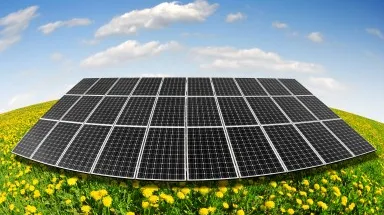
India’s non-hydropower renewables to reach 229GW by end-2030
The country's non-hydropower renewables capacity in 2021 was at 102GW.
India will see robust growth in non-hydropower renewables on the back of government support for renewables, with total capacity estimated to reach 229 gigawatts (GW) by end-2030, according to a report by Fitch Solutions.
Fitch said that India, which has a 102GW capacity of non-hydropower renewables, will be a “key renewables growth market” due to the robust growth of solar and wind power supported by the government and investor interest.
It noted that Solar Energy Corporation of India under the Ministry of New and Renewable Energy launched solar and wind power tenders which “have been met with increasing interest,” citing the 1.2GW power tender launched in May 2021, which is the second during the year.
Non-hydropower renewables generation is also expected to grow in the coming decade to 17% of the power mix in 2030 from 13%, it said.
Meanwhile, India’s power consumption will rebound in 2022 beyond the 2019 levels with the increasing electricity access and recovering manufacturing sectors. Consumption is expected to increase to 2,171 terawatt-hours by 2030, Fitch Solutions said.
India’s push to boost its manufacturing industry is also expected to lead to an increase in the electricity demand, it said, citing the “Make In India” initiative by the government in 2014.
Fitch Solutions also noted that the increased supply to electricity-intensive sectors such as automobiles, electronic systems and construction, as well as the government’s increasing commitment to promoting chip production in India will also boost electricity consumption.
It noted that India has been advancing grid expansion plans to ensure sufficient supply for the electricity demand so electricity generated from new solar and wind projects is fully utilised.
“In spite of this development, we still expect a key downside risk to renewables and consumption growth to be slow grid developments, which will hamper the utilisation of non-hydropower renewables electricity,” Fitch Solutions said.
Transmission and distribution (T&D) infrastructure across India “are ageing and in need of upgrades,” it said adding that of the 814 energy and utility projects worth US$378b, the majority are power plants and only 107 are transmission grid projects.
Fitch Solutions also noted that the Asian Development Bank partnered with the Indian government for the construction of new T&D infrastructure, the “Green Energy Corridor and Grid Strengthening Project” which will connect renewable power to the nation’s grid.













 Advertise
Advertise











